In 2023, there were a total of 351 live births delivered at the Gibraltar Health Authority. This works out to approximately 6.75 births per week throughout the year. Further statistical analysis will be performed, including on calculations of Gibraltar’s birth rate when the updated census is published. *It is important to note that 2018 births need to be validated as the drastic drop is likely due to incomplete data.
Figure 1: Total number of live births at St. Bernard’s Hospital Gibraltar 2010-2023.
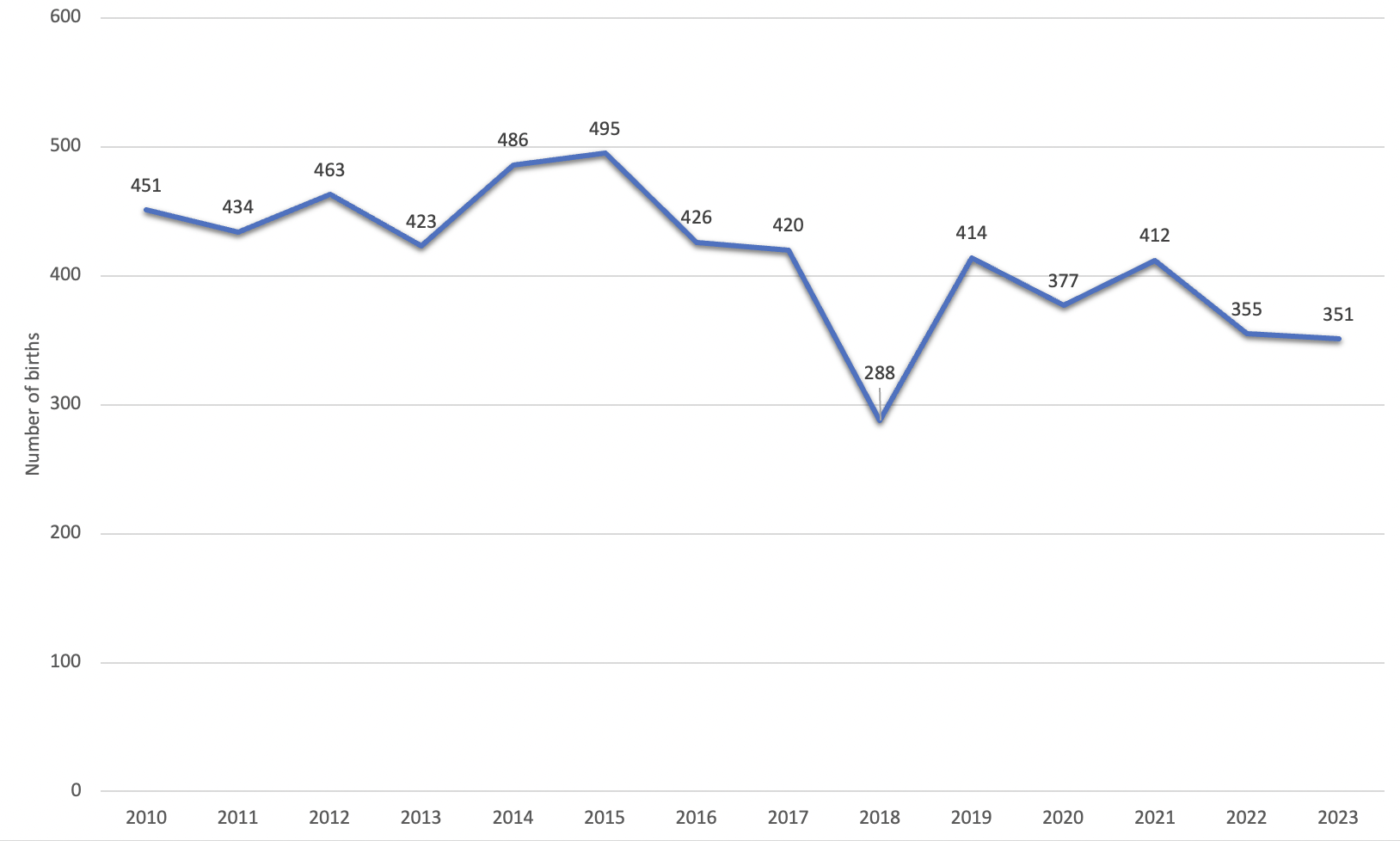
These figures are slight under representations of total number of live births to Gibraltarian mothers each year as this data only captures births which occur at St. Bernard’s Hospital.
- Multiple pregnancies, and premature births are usually transferred to Spain for delivery and specialist neonatal care.
- Some Gibraltarian mothers give birth overseas.
The crude fertility rate – the number of live births per women throughout their reproductive lives – has reduced from 2.22 in 2012 to 1.39 per women in 2021. Across Europe, there is a decreasing trend in fertility rates but the reduction here is significantly lower than the UK where the 2023 fertility rate is 1.75. The lowest rate in Europe is Andorra, at 1.1 births per women (2022). This downward trend means that without inward migration, the population size of Gibraltar will reduce. This will have medium and long term impacts, for example on demand for school places, working age employment and income from taxation.
Similar trends in fertility rates can be observed in developed countries due to improved educational opportunities for women, lower child mortality, economic growth and improved access to contraception and family planning. The opening of the Well Person Unit in 2018 has improved education and access to family planning and contraception services within the local community in recent years.
Figure 2: Births by delivery type – St. Bernard’s Hospital 2016-2022
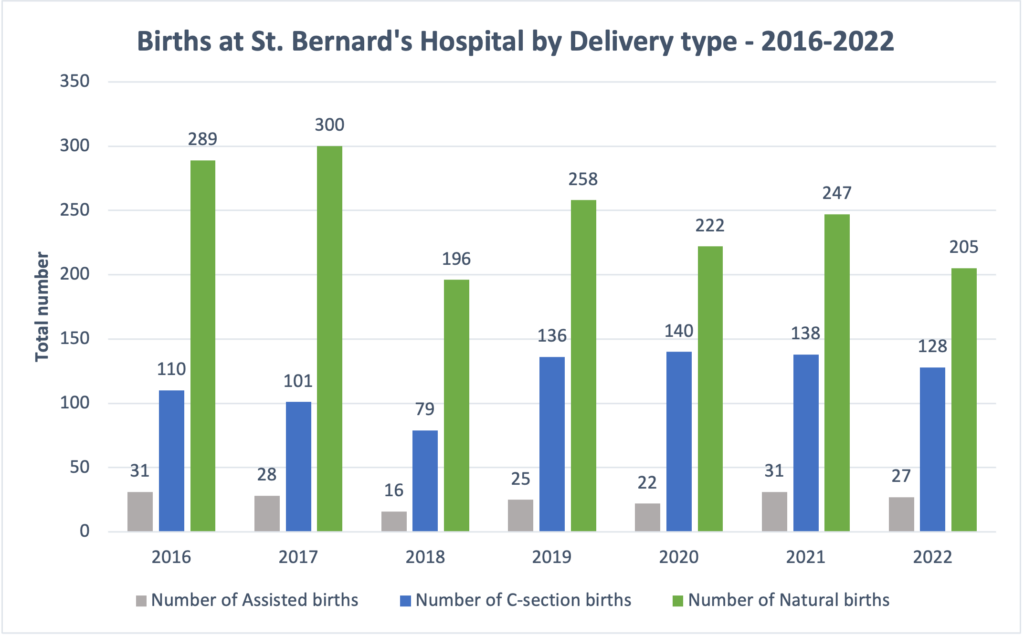
There has been an increase in the number of caesarean births and decrease in natural deliveries. This is in line with global patterns where caesarean section use continues to rise globally, accounting for 21% of all births globally (World Health Organisation, 2023). In 2022, 27 women had an assisted birth delivery type. This was down from 31 deliveries in 2021. An assisted birth is a vaginal delivery assisted by the use of forceps or a ventouse suction cup.
Figure 3: C-sections performed at St. Bernard’s Hospital by type.

The increased rates of caesarean section globally are thought to be due to changing risk profiles of both expectant mothers an unborn children, as well as an increase in maternal request for c-section (Mylonas & Friese, 2015). When caesareans are planned, for medical or personal reasons, it is known as an elective c-section. Elective c-sections have been the most common type of caesarean performed at St.Bernard’s Hospital since 2018.
Figure 4: Premature births vs term births.
Percentage of births born premature vs to term. Bernard’s Hospital, Maternity, 2016-2023.
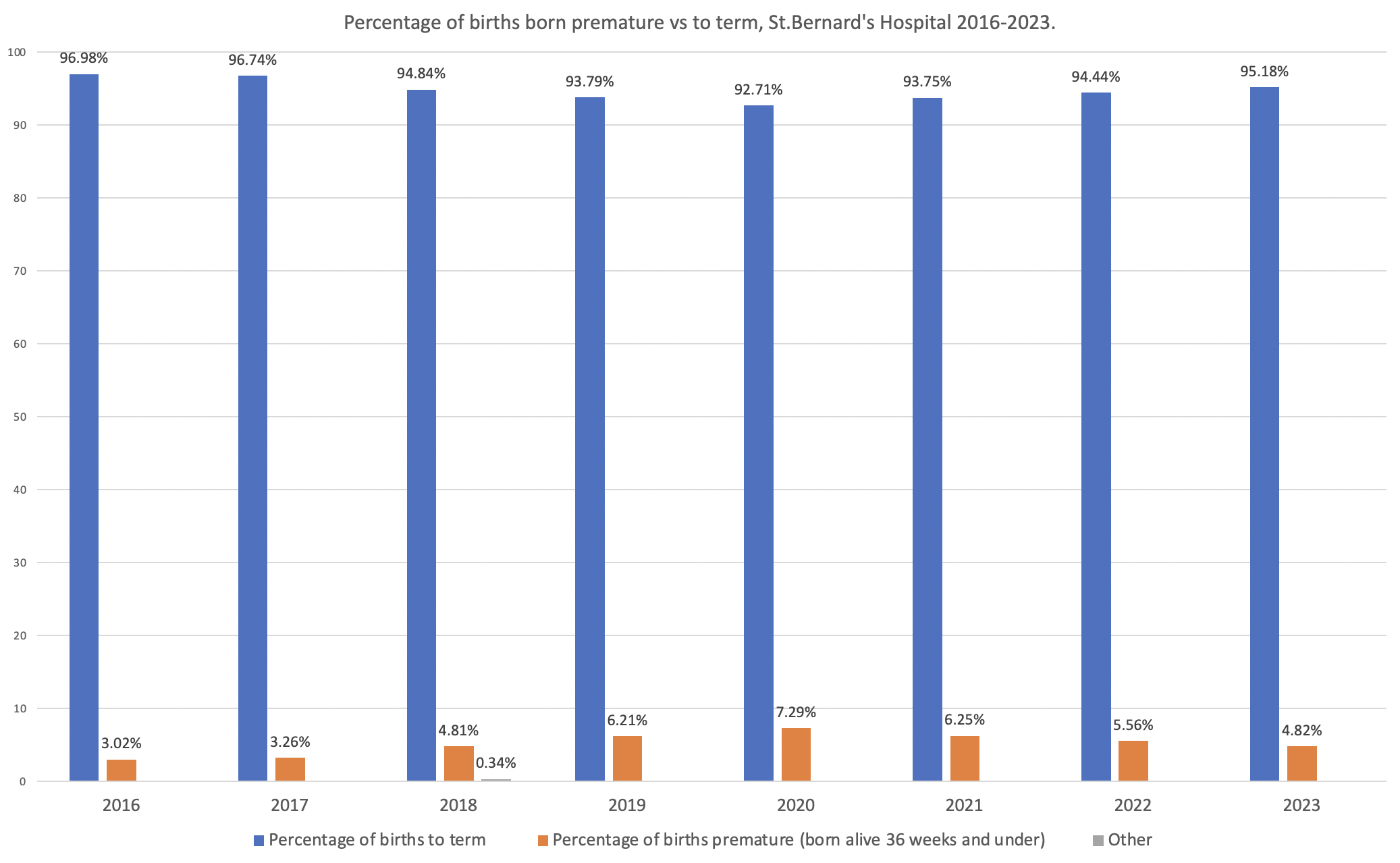
Low birth weight babies
Having a healthy pregnancy is important for the future health of the baby. Low birth weigh (LBW) babies are at increased risk of health and developmental issues. Two key contributors to low birth weight births are smoking and premature birth.
An important factor that can influence birth weight of babies is maternal smoking during pregnancy. At this time this data cannot be extracted retrospectively from the GHA system. It is going to be collected prospectively and future trends will be included in future JSNA updates.
Figure 5: Proportion of babies born at St. Bernard’s Hospital at a Low Birth weight
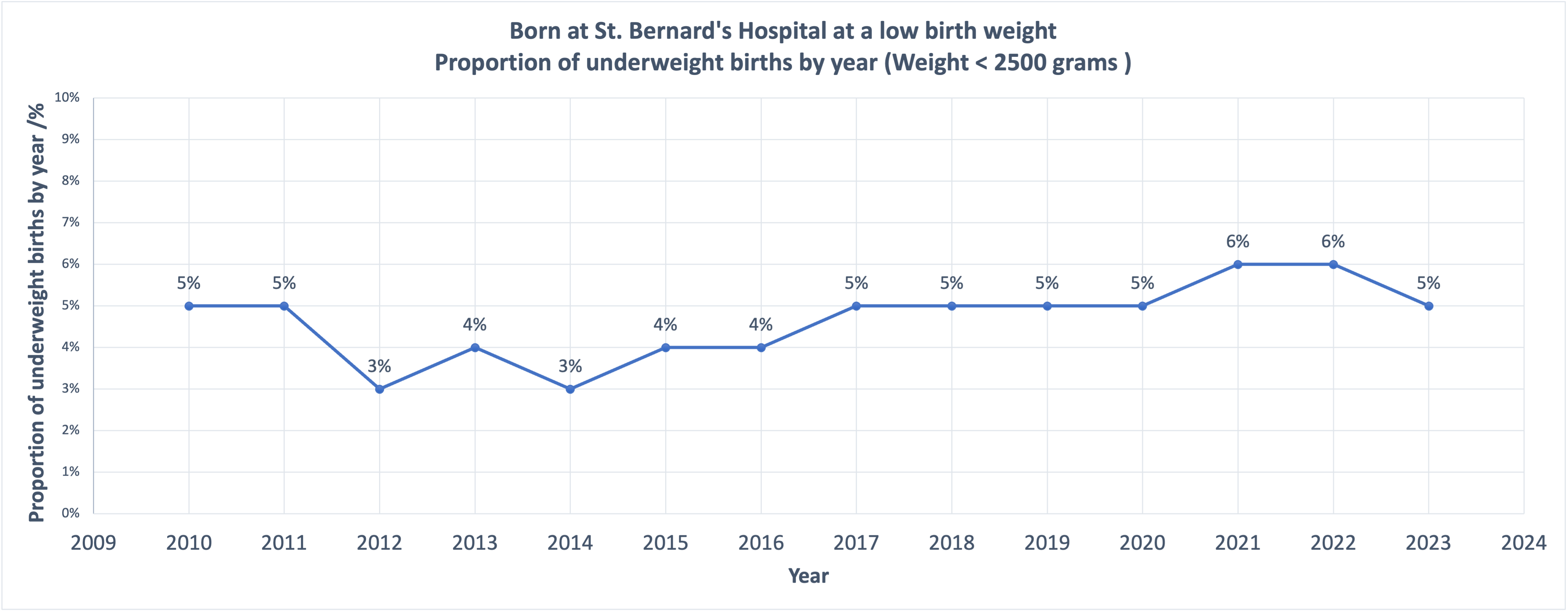
Age of mother
In 2023, the greatest proportion of births was delivered to mothers aged 30-39 years. Women are giving birth later on in life compared to previous years. This is in line with trends in developed countries. Additional data is required in order to understand trends of age of first time mothers.
Understanding these trends is important as increasing maternal age can increase the risk of gestational diabetes, preterm birth, low birth weight, labour complications and a need for cesarean section. Increasing maternal age may require hospitals to resource maternity and neonatal units according to trends.
Figure 6: Proportion of births by mother’s age group (2023)
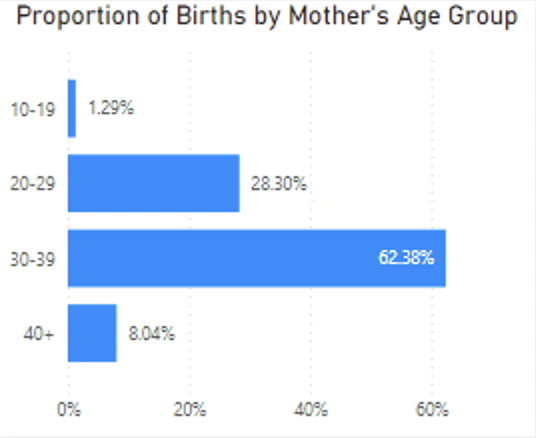
Figure 7: Average age of mother (12 month rolling average), St. Bernard’s Hospital, Maternity (2004-2023)
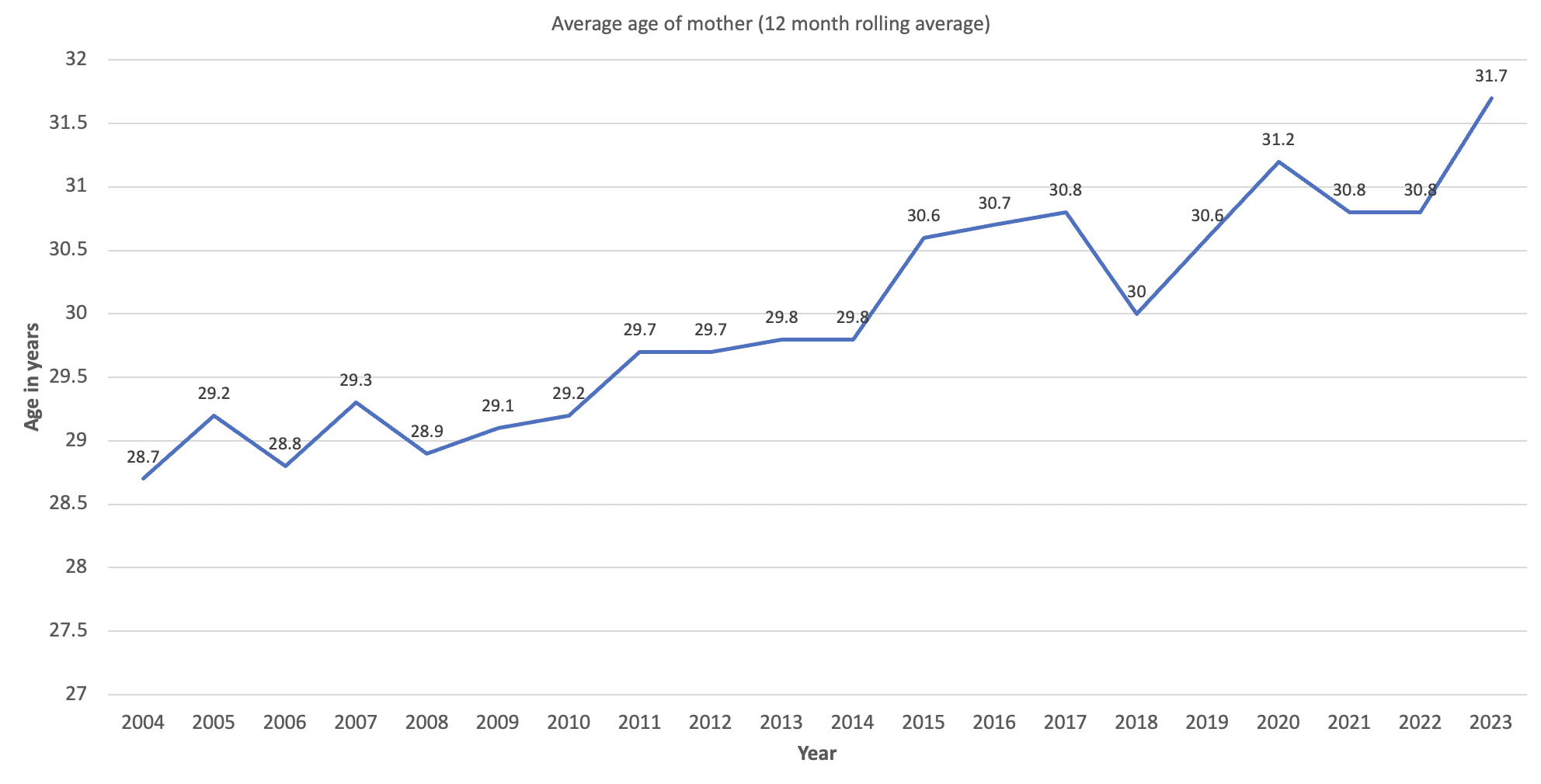
Termination of pregnancy
Since the termination of pregnancy service commenced, the GHA have assessed 99 women requesting a termination until June 2023. Following assessment and counselling, 77 terminations were completed. Of the 22 who did not complete termination, 10 continued with their pregnancy.
Of the remaining 12 who did not continue with the termination, this was due to one of the following reasons: ectopic pregnancy, miscarriage, exceeded limit for termination (over 12 weeks pregnant) or false pregnancy test reading. In the future we will update this section with additional analysis, such as broad age groups. Detailed analysis will not be undertaken to ensure that we maintain confidentiality.
Page last reviewed : January 2024

